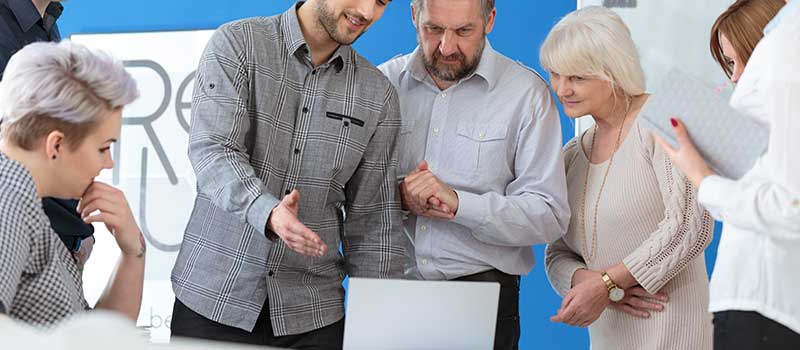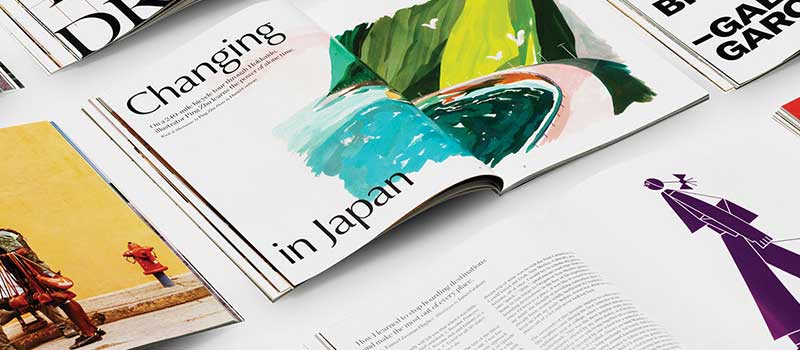What endears consumers to brands are no longer great logos, colours, slogans, or the uniqueness of their products, although those are equally important.
In recent times, the experience and feelings that customers have when they interact with a brand matter more than anything else.
Creating a positive brand experience that consumers can easily connect to is more important in the digital age than it has ever been.
Here’s the thing, connections can be very powerful, they subconsciously draw users to a brand.
As brands create natural connections with their target audience, they have an opportunity to become a memorable brand that the consumers love.
A unique brand experience can be your differentiation in a highly competitive market.
In this article, we’ll explore how you can create brand experiences that are purposeful, help you fit into consumers’ lives, and ultimately make you the brand of choice in your target market.
Brand Experience Defined

Brand experience is the connection between your brand and the customer experience you offer from your user experience to your in-store experience and everywhere in between.
It is the reality of what users feel when they engage or interact with your brand,
the thoughts,
feelings,
sensations,
reactions,
and connections
that users have which usually remain with them long after their interactions.
Your brand strategy is who your brand is and the method you are using to communicate it while the manifestation of that communication is your brand expression, which typically is how consumers relate to your brand.
As a brand, you have to understand what produces positive customer feelings and evoke them consciously from your marketing communications to the environments you create across all touchpoints of user interaction and engagement.
These include your website, email, shopfront, social pages, downloads, product delivery, customer service, events, and more.
Since users interact with your brand across various touchpoints, you need to create a consistent brand experience across all those touchpoints to make lasting impressions.
Brand Experiential Design

Brand experiential design is a deliberate and creative way to integrate emotional connections into every fabric of your brand strategy. The elements that make up a brand experience include:
Brand design
User experience
Brand image, and
Customer support
Experiential design should be geared towards incorporating some “feel good” emotions in your product designs, website, and all other touchpoints that users have with your brand.

Before mapping out an experiential design plan for your brand, you should think about the following:
What the wants and needs of your audiences are?
How your products fit into their world
What touchpoints do you have as a brand? (web, email, shopfront, social media, etc.)?
What environments do you want or need to create?
How will you create such environments?
What attributes do you want to communicate?
What feelings do you want to evoke?
What memories do you want to leave with them ?
Channel your designs towards facilitating deeper connections with target customers by creating ongoing positive experiences across your brand’s mediums..
PRO Brand Strategy BluePrint
Build Brands Like A Pro Brand Strategist

Who’s Involved with Brand Experiential Design?

The experiential design integrates all your major departments including marketing, sales, creatives, product development, customer service, and operations.
The marketing department works on brand messaging and strategy while creatives provide the brand assets.
The product department ensures that the quality of products and services matches the brand’s promises while sales do the promotion.
Operations ensure everyone, including those in customer service aligns with the brand’s value, voice, and quality to create a consistent experience across all brand touchpoints.
Explore Brand Strategy
Programs & Tools
How To Create A Brand Experience

Creating a great overall brand experience will require looking both inwards and outwards.
Inwards into your brand’s story and what you are offering, and outwards into what resonates with your target audience and what their needs are.
Here’s a guide on what to do more specifically:
#1. Engage The Senses

Create opportunities for customers to see, hear, read, and talk about your brand.
You can use contests, surveys, and product sampling at grocery stores to engage your target audiences.
Because a sensory brand experience engages more senses than a. typical brand experience, they’re much more likely to be remembered.
#2. Focus On Storytelling

Storytelling fosters curiosity and also encourages continuity.
As you infuse your story into your customers’ stories, you’ll make a beautiful blend that is not just meaningful but also dynamic.
Use your blog, social media pages, E-newsletters, whitepapers, ebooks, quizzes, and other online resources that appeal to the senses of your audience.
#3. Sales Should Be Experience-Driven

Customer satisfaction should be at the core of your sales goals.
Therefore, it’s critical to be intentional about what you want your customers to experience before, during, and after-sales.
Make the entire purchase process simple and enjoyable such that customers keep feeling good even after the purchase experience.
You can achieve this by creating a physical or online store that is easy to navigate. Customers should be able to easily locate items and get all the information they need to make a buying decision quickly.
Physical stores should be clean, spacious, welcoming, and “relaxing” for visitors.
#4. Use Customer Feedback And Insights To Evolve

Use customers’ feedback, reviews and interaction data to evolve your brand experience.
Be in tune with your customer’s changing needs and use that to improve your brand experience.
You can get data insights and metrics by tracking customer interactions and behaviour at every touchpoint and Net Promotor Score (NPS) surveys to gather critical feedback.
#5. Leverage Experiential Marketing

Experiential marketing has turned out better results than the sales-driven marketing strategy.
In an EventTrack 2021 report, 91% of consumers indicated that they would be more inclined to purchase a brand’s product or service after participating in their brand activation experience while 40% felt they became more loyal to the brand after an event experience.
You can organize solo events to create powerful brand experiences featuring intriguing speakers, immersive learning experiences, intriguing speakers, networking, and other sensory experiences.
You can also collaborate with event organizers in your industry to feature your brand as a facilitator, sponsor, exhibitor or key stakeholder.
#6. Consistency Is Key

The different elements that make up your brand should speak the same language.
Your brand assets such as logo, typography, colour pallete, etc must be visually consistent.
The attitude and communication among your people (staff) must also be consistently positive.
Your brand voice must be unique and consistent as well across all touchpoints while your messaging and stories should double down what you want your audience to understand.
Brand Examples With Great Brand Experience

When it comes to brands doing things as it should be as far as creating fantastic branding experiences is concerned, the following companies are worth looking up to.
Allbirds

Allbirds is the company name of the direct-to-consumer (DTC) online footwear brand that produce Wool Runners which are made from ZQ-certified merino wool, and Tree Runners, made from FSC-certified eucalyptus trees.
The company was founded in 2015 but it has quickly grown to become a strong brand with over $1.4 billion in market value, despite operating in an oversaturated footwear market.
Top-quality shoes

But what made them so successful?
The details are in their unique brand experience and storytelling ability.
Shoes made of wool, unique and ultra-comfortable, a representation of the “comfort that comes naturally.
The materials are natural and also sustainable which makes them appeal more to Gen Z consumers. The shoes are standard, stylish, minimalistic, and of high quality.
Customers are assured a 30-day no-hassle product trial period.

Allbirds has a product page that is clean, straightforward and value-driven.
The company uses the page to show the diversity of its products including different colour shades and materials.
Visitors can change the colour, pick sizes, and see how it looks in real-time…
The shoe is the central image on a product page which means customers can easily get a sense of how the shoe looks by scanning through different angles or viewing a quick video that illustrates how the shoe moves on actual feet.
Social Proof And Storytelling

Allbirds features a “Birds in the Wild” column on their website which shows real people, models or influencers wearing Allbirds in their daily lives.
The company also provides content on the site on why they use specific materials in the production of their shoes, breaking down each part of the shoes and what they are made of.
This is deliberately done so that without being able to touch the materials, consumers can have a sense of what they feel like.
Humour & Personality

When customers sign up to the Allbirds mailing list, they nurture them through the sales cycle through carefully crafted, funny emails, creating direct and stronger connections with every customer on a personal level.
Their “Welcome Email” with the subject line, “Welcome To The Flock” suggests a sense of community, belonging and playfulness.
Almost all of their email titles inject some “wool-themed” humor including the “Abandoned Cart Email” titled “Don’t Get Cold Feet” and the “Thank You Email” with the subject line, “Thank Ewe” with a bonus dancing lamb GIF to delight customers.
All these are consistently showcasing Allbirds’ brand identity and brand personality to customers, reminding them about the materials used in the creation of Allbird’s products.
What a great example of brand experience from start to finish!
The company is already expanding into physical retail and has continued to use humour to highlight the company’s use of natural and recycled materials for the production of its shoes.
They also help customers who care about how the products they use are sourced to connect to the source of their shoes.
Bonobos

Bonobos purpose for being in business is to make “pants with the perfect fit.” The company was founded by people who were looking for pants that fit but found none.
Since the founders couldn’t find pants that fit them, and neither did anyone else they asked, they launched out in 2007 to make the “perfect pair of pants,” and grossed $100,000 revenue in their first year.
Bonobos invested in both their pants and the people that wear them and customer experience was at the centre stage from day one.
The company made their products so good that people couldn’t stop talking about them.
Such that even before setting up their website, they already had a significant following through word-of-mouth.
Guide Shops

Bonobos popularized the idea of using Showroom stores (Guide shops) where customers can try out items, check out, and have their items shipped from a warehouse or another external source to them at home.
This arrangement affords customers the opportunity to visit and leave the store without any extra baggage.
It also ensures that customers can get pants that are their perfect fit. B
onobos earned the trust of their customer by ensuring shipped items are delivered in a timely manner.

Bonobos implemented a digital-first experience before evolving into stores.
They also made online shopping so easy with fast checkout and free shipping, and customers can return items at no extra costs.
Over the years, Bonobos has commanded large brand loyalty and has grown beyond making pants.
They now make other clothing products such as suits and dress shirts and have over 60 locations.
The brand became such a success that Walmart acquired it for $310 million.
Away

Away is a direct-to-consumer (DTC) travel luggage brand with a difference. While many luggage retailers use product features such as zippers, wheels and pockets to entice customers, Away focuses on the experience of using the product instead.
The company uses storytelling for their brand experience strategy.
That’s how they were able to launch their products even when products were not ready on launch day.
They put together a piece of creative content for brand awareness which generated some buzz.
It was a hardcover book that featured interviews and real stories with 40 interesting travellers among whom were photographers, foodies, and trendsetters.
The book titled “The Places We Return To” sold out and was instrumental to Away’s $12 million in first-year product sales.
Other Touchpoints

The touchpoints Away use for brand experience include their beautifully designed print and digital magazine, “Here”, and “Airplane Mode”, and a podcast that “explores the reason why we travel and places we find ourselves.”
Their Instagram page is full of user-generated content with customers sharing pictures using their Away bags while traveling.
Apple

Apple is a brand name with such high brand equity.
The company is popular for appealing to the emotions of consumers.
It’s not just that Apple uses its products to create emotional connections with their customers, their messaging, advertisements, and in-store experiences also do the same.
Their stores are clean, spacious, and smooth.
Whether you are shopping online, using their product or visiting their local store, the “feel good” experience is usually the same from opening that beautiful box to playing with their new toys in-store.
That’s why Apple’s customers keep coming back year after year.
Over To You
One of the goals of brand management is to always create a positive impression about your brand to your target customers.
Everything your company does from introducing new products to guiding them through the customer journey contributes to your brand experience.
The question is, is your brand experience consciously designed to produce the right perceptions and memories?
You can deliberately evoke positive emotions about your brand by designing a brand experience that is admirable, sensory, and has connections with the deeper needs of your target audience.
But it’s only when you take the time to consciously design a brand experience, can you leave your audience with a very intentional perception that ultimately shapes whether or not they’ll choose you over your competitors.
On-Demand Digital Program
Brand Master Secrets
Make the transition from hired-gun to highly valued brand strategist in less than 30 days. The systems, frameworks and tools inside this comprehensive program are all you need to level up.








